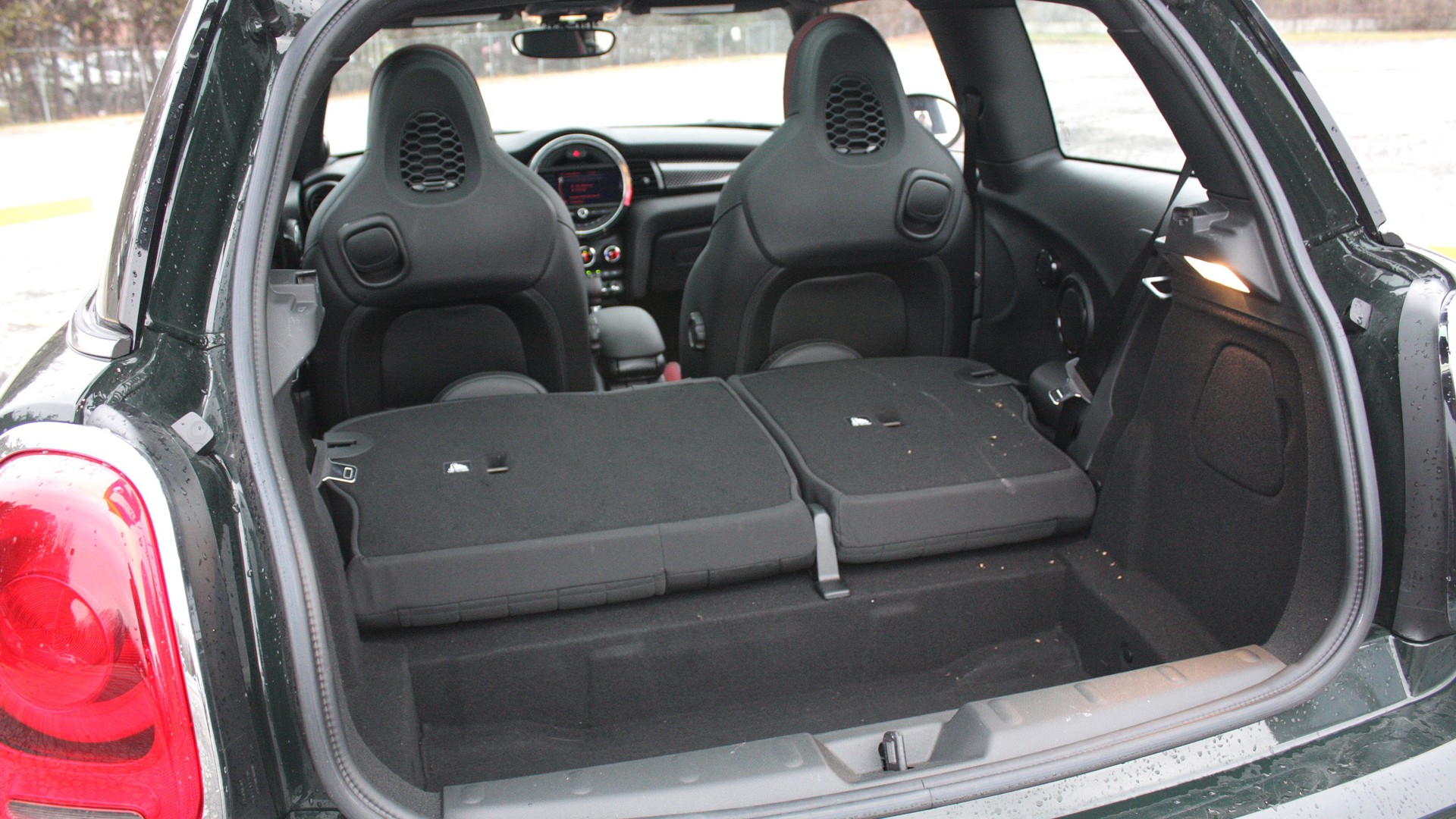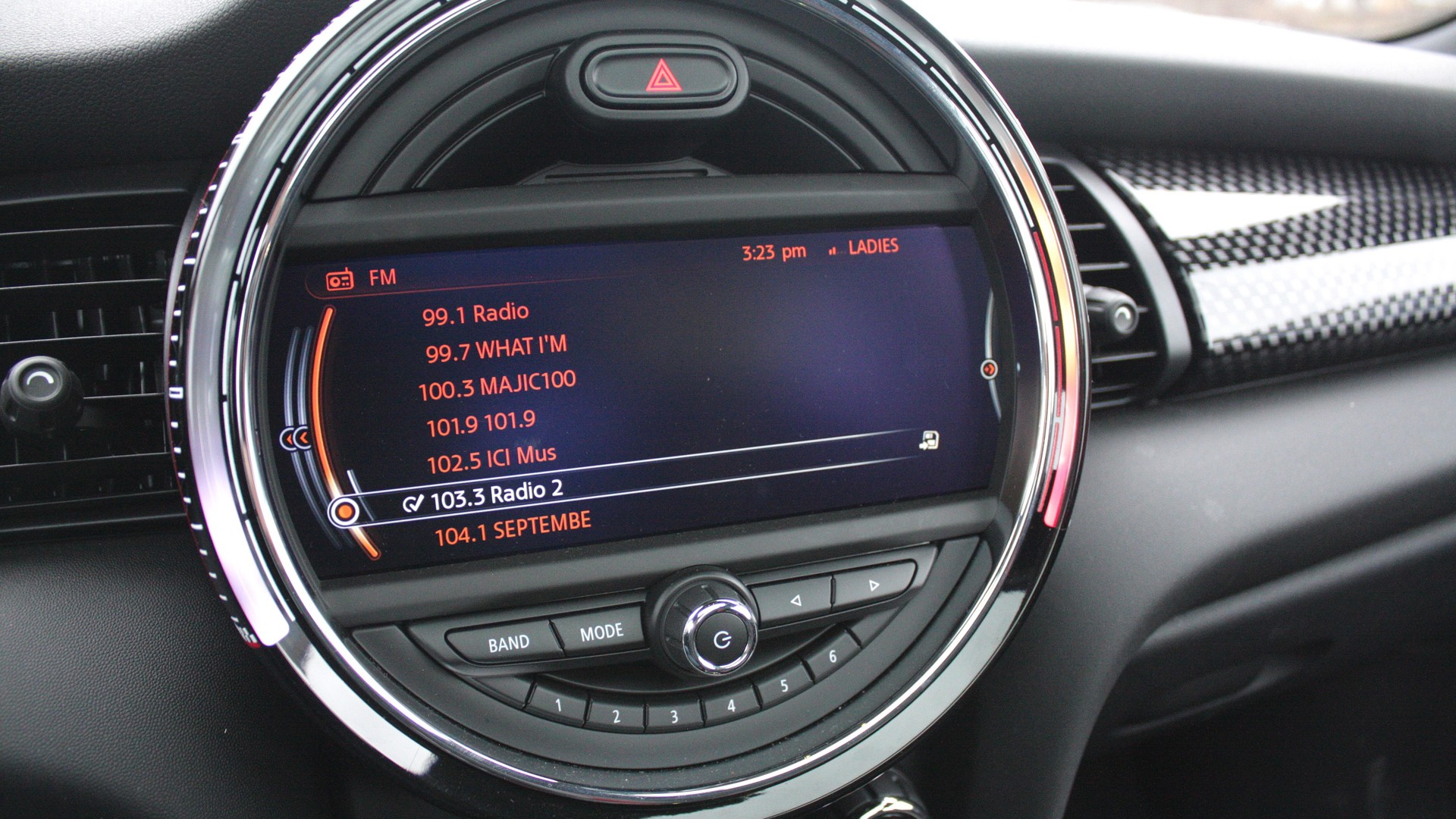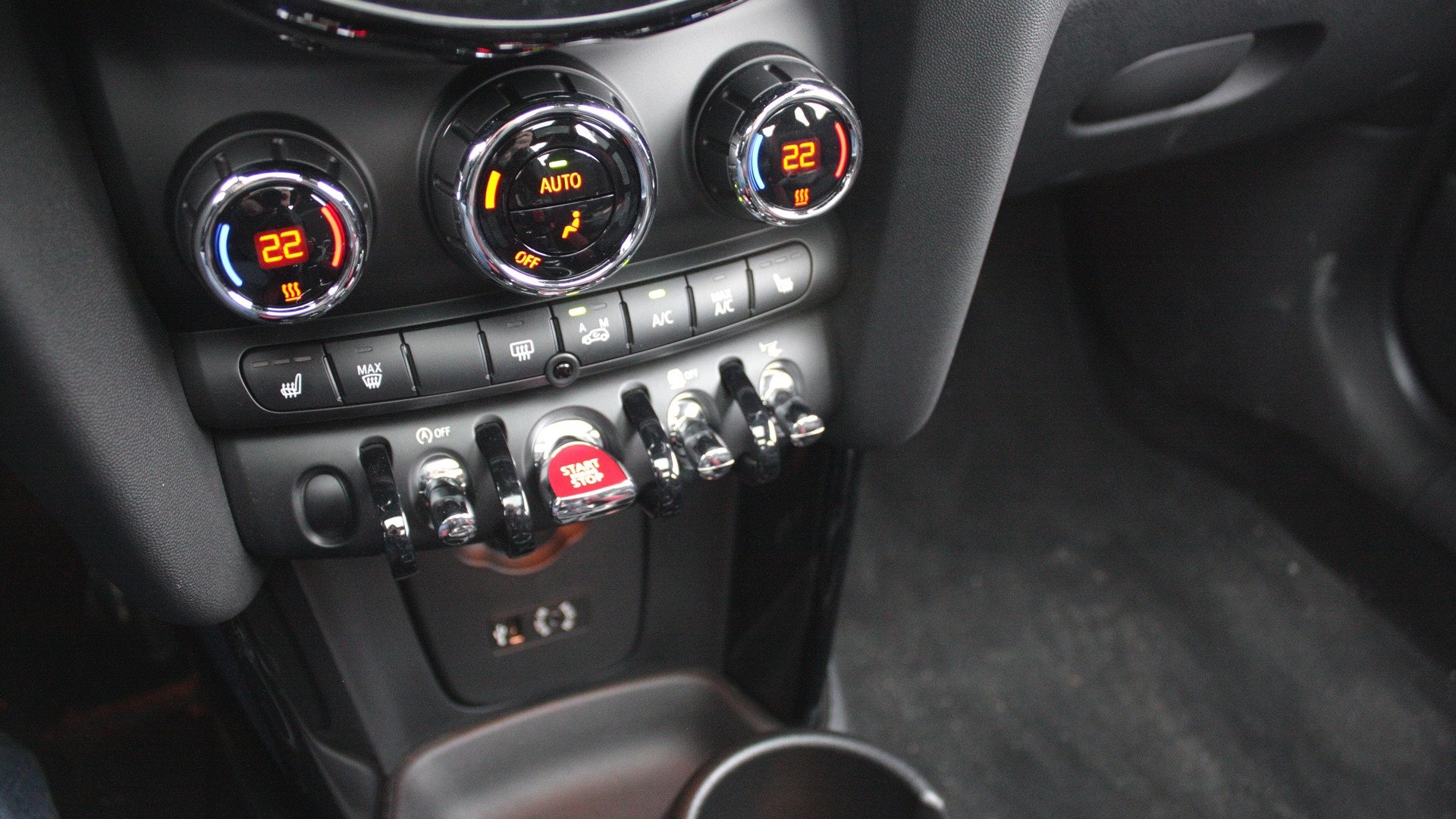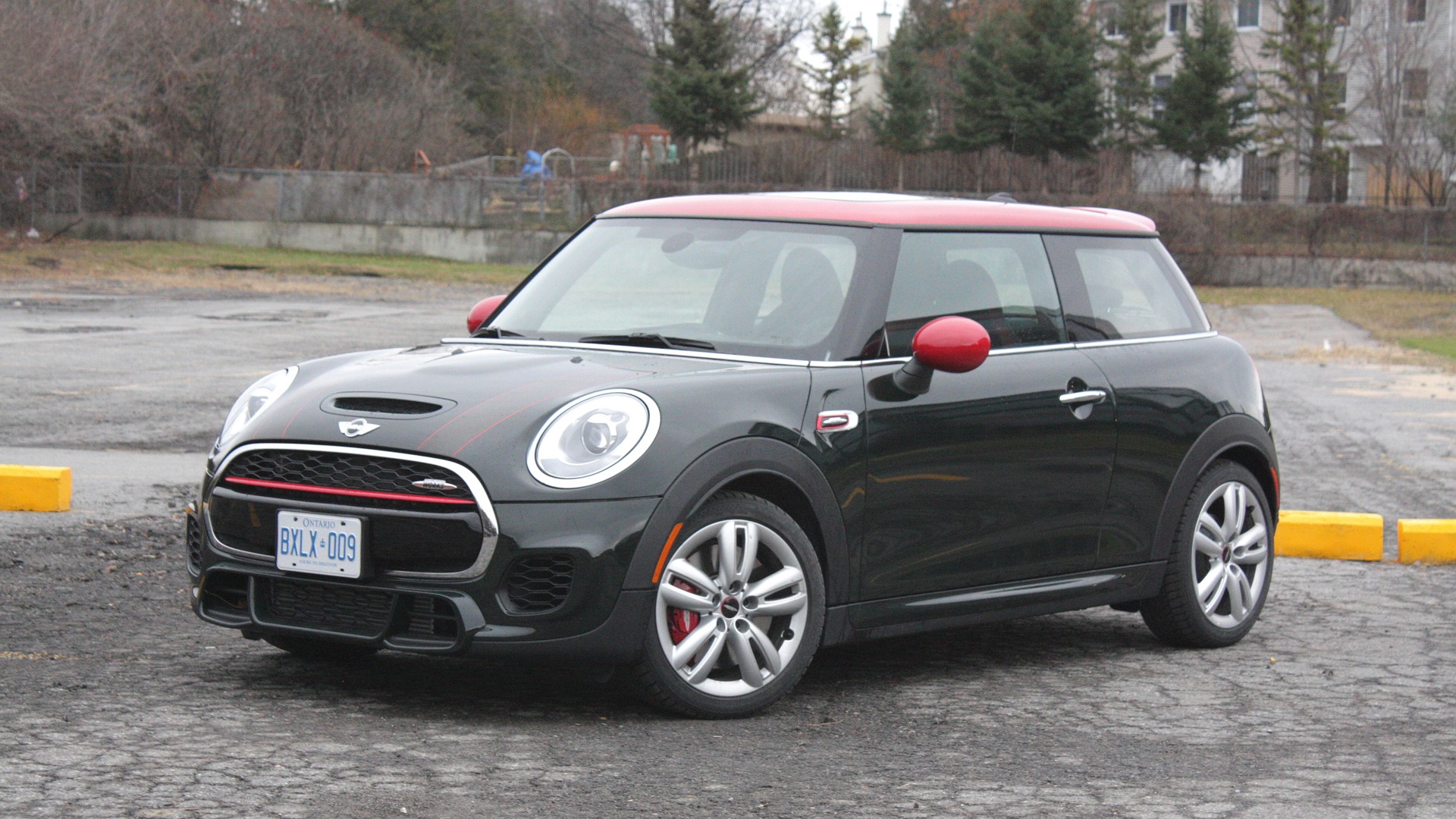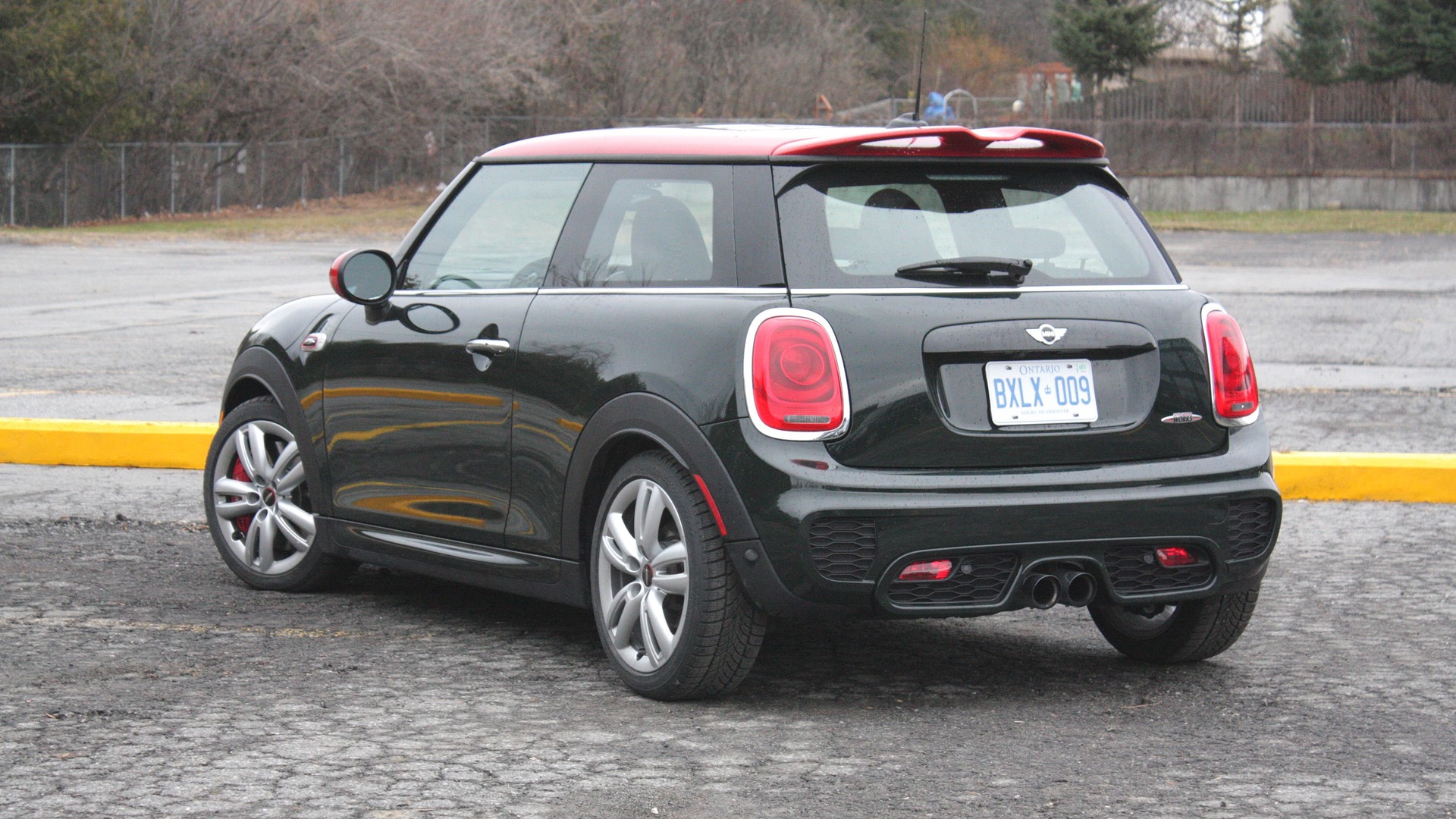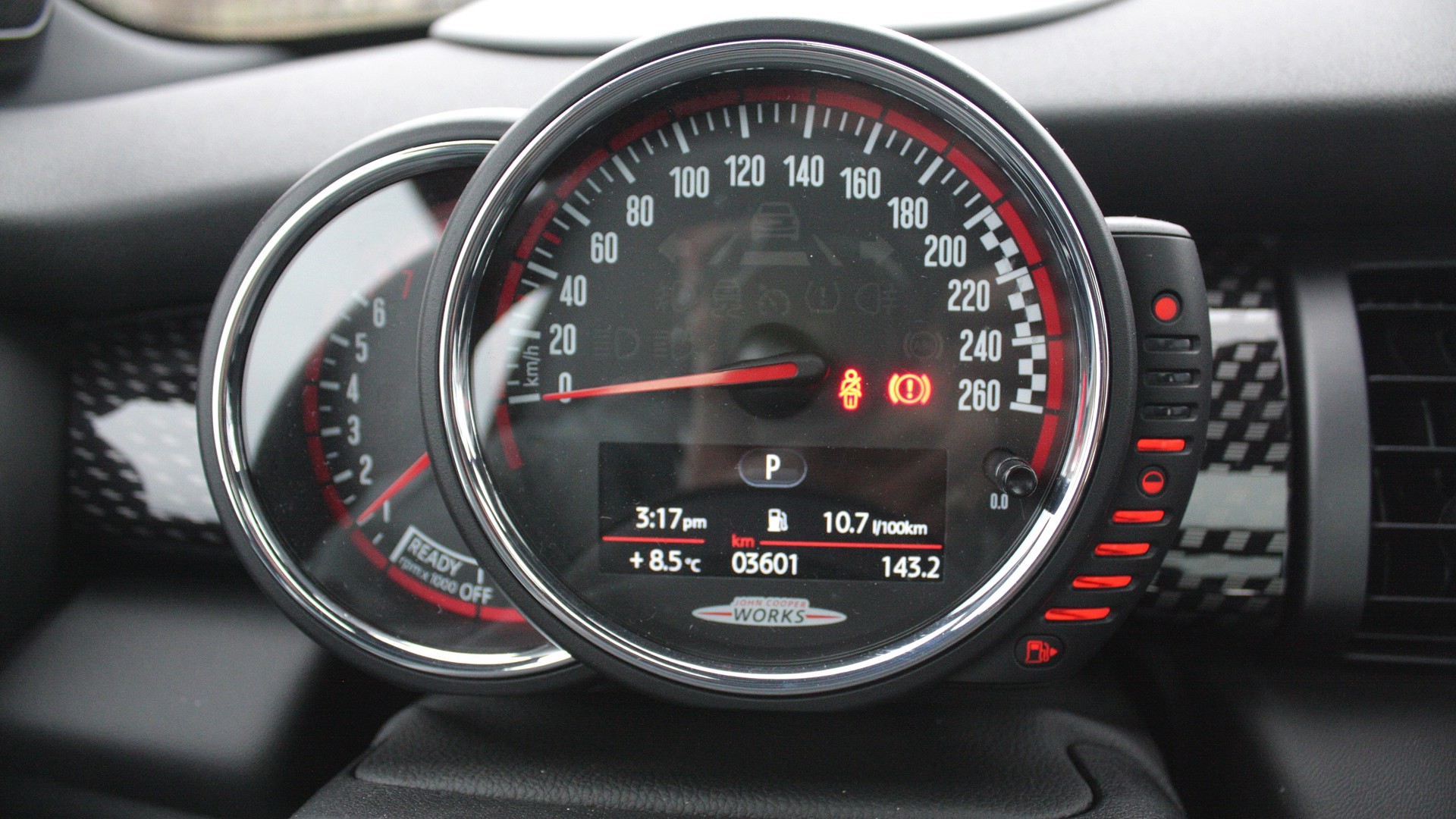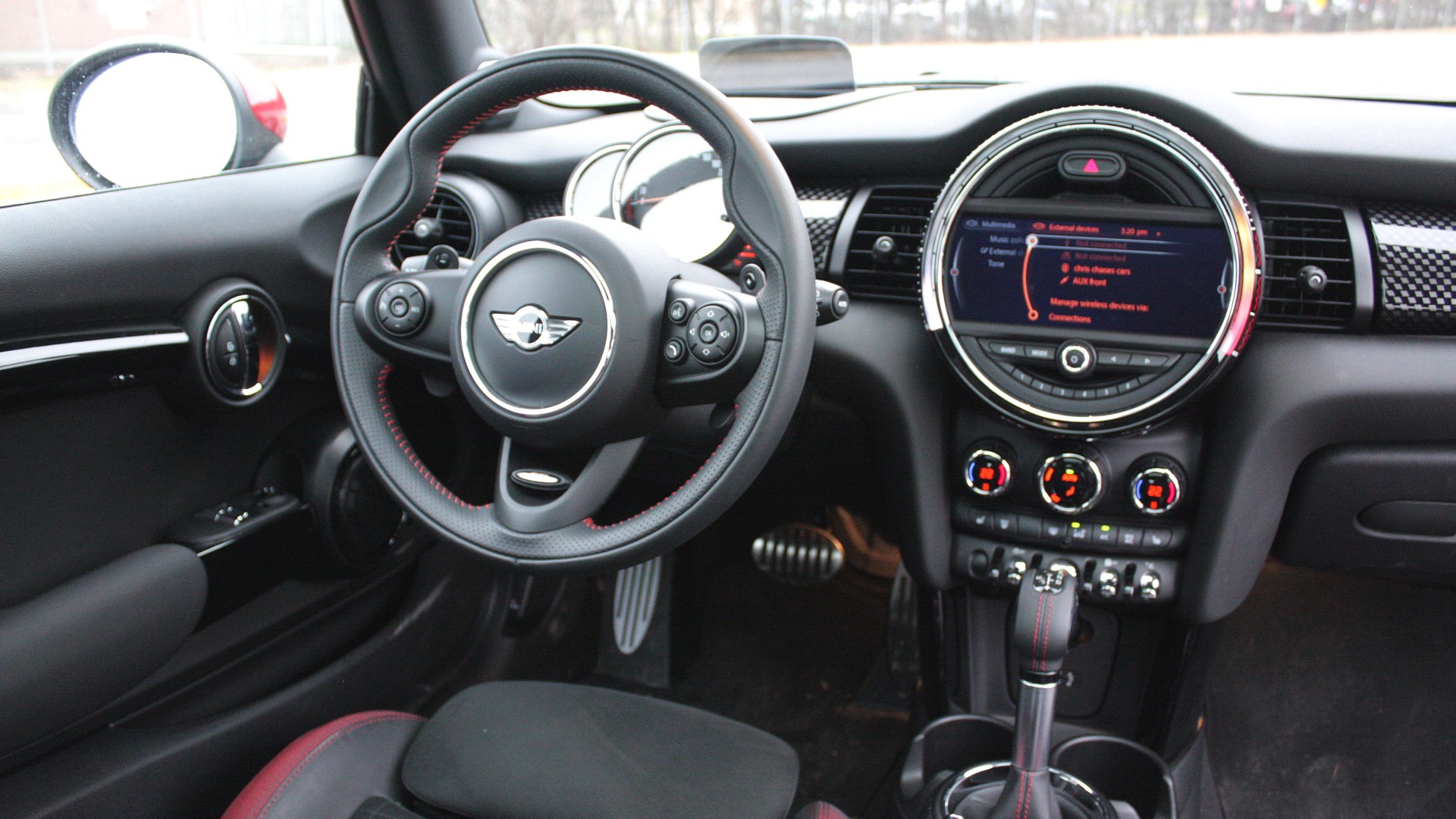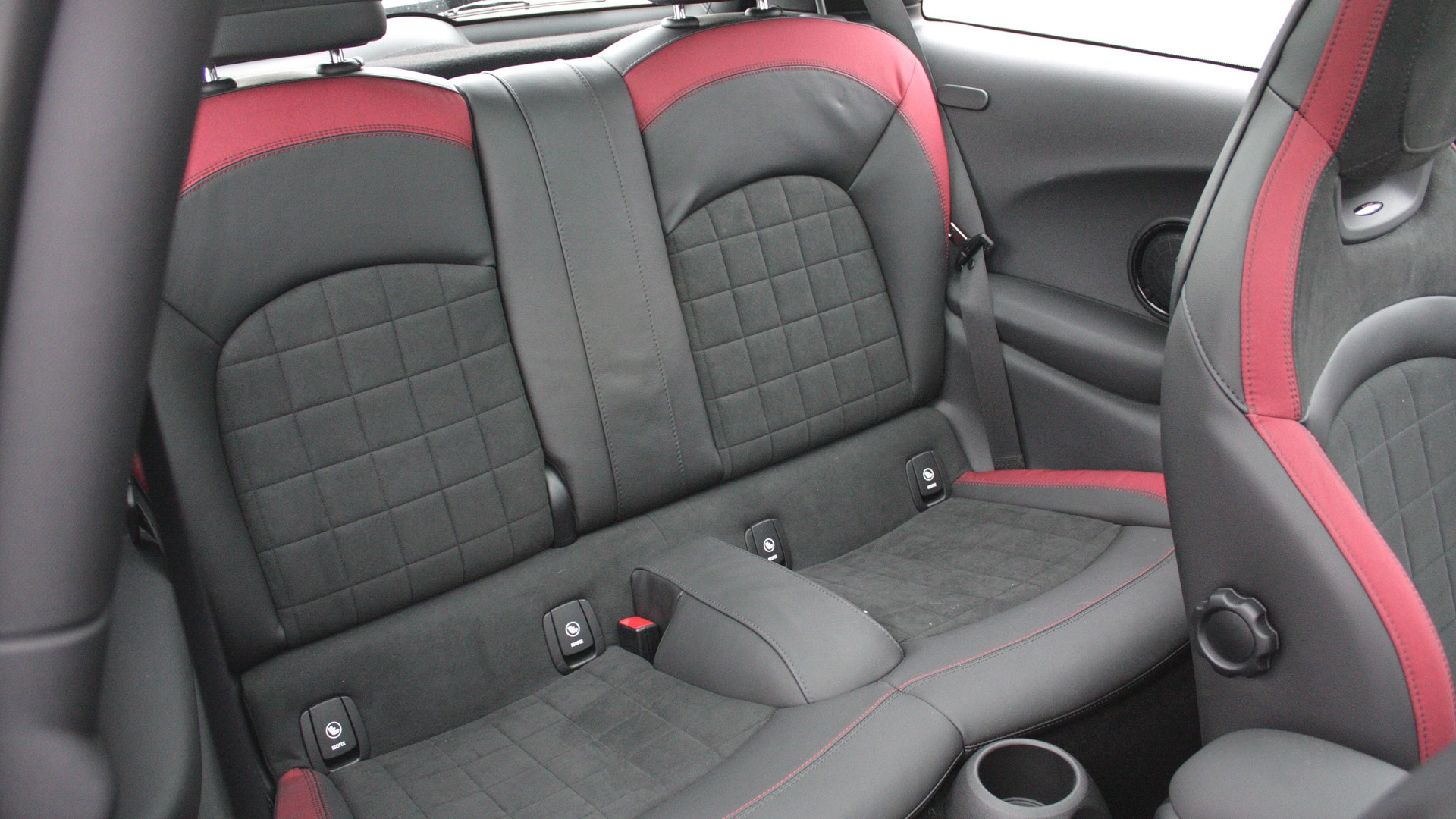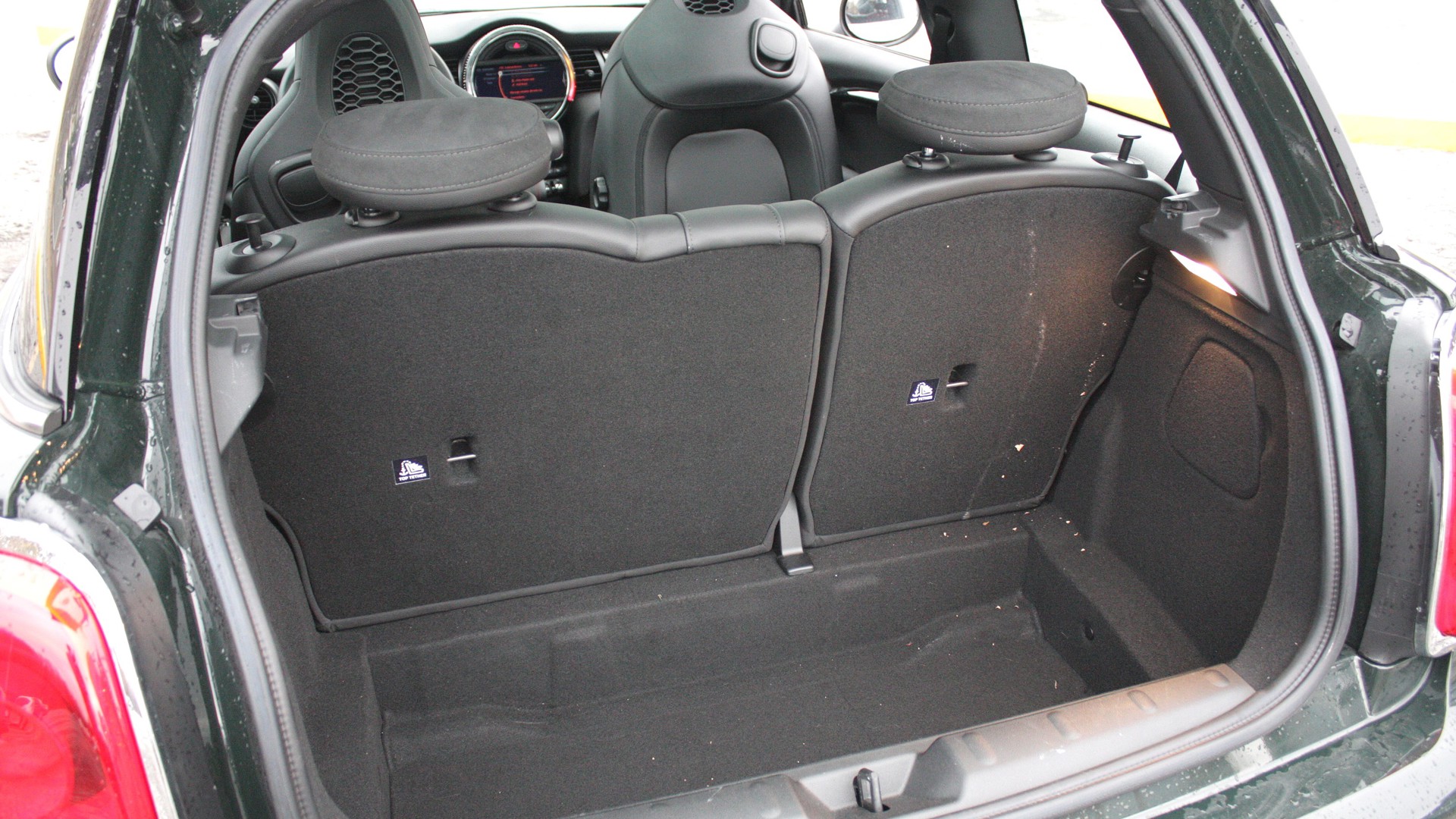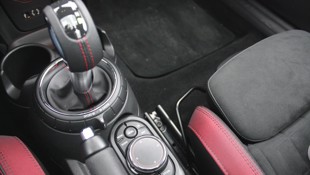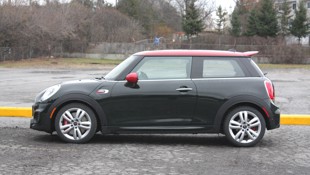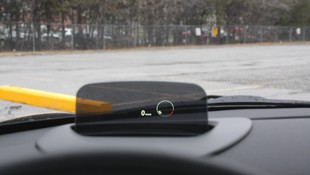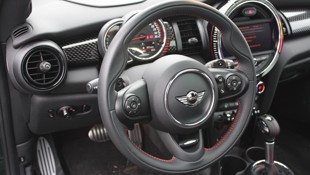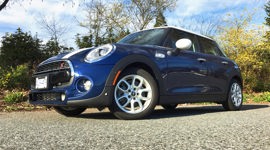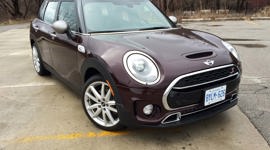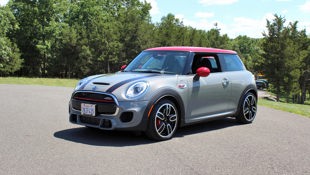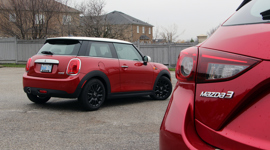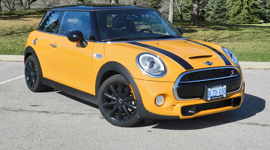Recently, while I was enjoying a tasty beverage at the coffee shop, the barista placed a take-away cup on the bar and called out a six-shot latte. For those not familiar with fancy-coffee terminology, that means six times the normal amount of espresso – and caffeine – went into that beverage.
In Mini's model language, the John Cooper Works label denotes a similar power-up. The brand's JCW models are its most potent offerings: cars that evoke the spirit of John Cooper, the British racecar designer who helped create the first performance-tuned versions of the original Mini.
Did the world need a Cooper that shaved half a second off the S' sub-seven-second zero-to-100 km/h acceleration time?
Mini calls the latest JCW – the first based on the redesigned Cooper introduced in 2014 – "the most powerful Mini ever," using a 2.0L turbocharged four-cylinder engine that’s shared with the Cooper S but tuned here for 228 hp and 236 lb-ft of torque – increases of 39 hp and 29 lb-ft.
Did the world need a Cooper that shaved half a second off the S' sub-seven-second zero-to-100 km/h acceleration time? Not in my opinion, but I am no longer in a position to argue, following a week during which I made thorough and enthusiastic use of that extra power.
It says a lot about how people buy sporty cars these days that Mini even offers its most performance-oriented model with an automatic transmission. It does, and I admit I was crestfallen to discover that's how my tester was equipped. Ironically, this is the first Cooper I've tested in 10 years of reviewing cars that didn't arrive with a manual transmission.
I'm not really a numbers guy when it comes to vehicle specs. I tend to concern myself more with how a car feels than whether it has more power or skid pad grip than its competitors. That's why I don't care that Mini quotes quicker acceleration times for automatic versions of all three Cooper variants, with the JCW's advantage the largest: the automaker says my automatic-equipped tester scoots from a stop to 100 km/h in 6.1 seconds.
I would gladly take a car 0.2 seconds slower to highway speeds for the pleasure of working one of Mini's excellent manual transmissions, but in the spirit of I'm-getting-paid-to-review-this-car, I made myself promise not to dwell on it. Much.
As if to prove me wrong, it was clear from the moment I pulled out of the parking lot that this transmission is ready to get busy. Even in gentle acceleration, its shifts are quick and crisp. Automatics in family cars and crossovers are tuned to make you forget they exist (much like many of the vehicles themselves), but Mini's auto doesn't care that you can feel it at work. In fact, that's probably the point: automatic or not, this is a driver's car that feels no need to hide its mechanical nature.
As in all Coopers, flicking the tab on the shifter bezel to the left engages sport mode, which sharpens throttle response (which is pretty perky to begin with) and commands even fancier footwork from the transmission. Another flick puts the car in sport-plus – now we're getting to the good stuff – which sets the six-speed to rapid fire mode and turns the exhaust into a backfire generator that emits a hilariously intoxicating burp-like sound at every upshift.
The deeper you delve into the throttle, the better the soundtrack gets, and there's a lot of depth to this car's affinity for forward motion. I'm not sure what's more impressive: the off-the-line punch made possible by the engine's 1,250-rpm torque peak, or the eagerness with which the transmission downshifts for passing power in highway driving.
OK, maybe an automatic JCW isn't so bad after all.
Mini's new 2.0L engine was born from parent company BMW's desire to share technology between its vehicle lines: this engine has a lot in common with the motor in the BMW 320i, and the three-cylinder 1.5L motor used in the base Cooper is, in oversimplified terms, the same engine with a cylinder lopped off the end.
For all the ease with which it turns the Mini into a bullet, it's not an ideal fit in a Cooper, JCW or not. Its linear power delivery is great in a 3 Series, but here, it makes me miss the peaky nature of the last-generation Cooper's 1.6L turbo mill. That little motor had its flaws, but it was better suited to the car's personality; the 2.0L is too grown up for a car that, to me, was conceived to make its owners feel younger.
Speaking of grown-up concerns, Natural Resources Canada pegs the JCW's fuel consumption numbers at 9.4/7.5 L/100 km (city/highway), but my tester averaged 11.9 L/100 km in a week of being driven the opposite of gently. For the record, not only is the automatic JCW quicker, it's also more efficient; the manual version's NRCan ratings are 10.4/7.5.
If you want to be thriftier than that, twist the drive mode controller to the right to engage a "green" drive mode. I tried it once, just to say I did, and I'll leave it at that.
Optional on the JCW is a dynamic damper system that adjusts suspension firmness based on which drive mode you select. It tightens right up in the sport settings, but the default is best if you value your internal organs, at least on the frost-heaved roads that define an Ottawa winter.
Other JCW mechanical upgrades include big Brembo brakes that offer up great pedal feel and confident stopping power, valuable attributes in a car that encourages hard charging at every turn.
Tech stuff available in other current Cooper models makes an appearance here, like a head-up display that projects basic driving information on a little screen that motors up out of the dash. Pluses include being able to have it show a little engine rev counter next to the digital speed readout. My main complaint is that, while the display is adjustable for height, even the highest setting is further below my line of sight than I'd like.
A control knob on the console derived from BMW's iDrive setup works the central display screen. In cars with navigation, the top is a touch-sensitive surface you can use to "write" the letters in an address, and it works well.
All JCWs come with heavily-bolstered front seats with adjustable thigh supports. The base chairs are covered in "dinamica" cloth, but my test car was optioned with a cloth/leather combo that looks great, but adds $2,250 to the car's price. Ouch. Other options included navigation ($1,500); the "loaded" package that brings intelligent keyless entry, auto-dimming rearview mirror, and the dynamic damper suspension; a visibility package that bundles a backup camera, rear park distance control, and the head-up display ($1,300); an "essentials" package of panoramic sunroof, heated front seats, and rear fog lights ($1,050); and the automatic transmission, a stand-alone extra at $1,650. All told, my test car priced out to $42,190. That's a lot for a small car, just as a latte – multi-shot or not – is a pricey-but-tasty way to drink coffee.
The best part of that story from the coffee shop was that the guy who claimed the drink walked away with it, and then came back to the counter with a quizzical look on his face.
"Did you say this was a six-shot latte?"
"Yup," replied the barista. "Is that not what you ordered?"
"No, but I'll take it!" he said, evidently enthusiastic about the prospect of being awake for a week.
For all of my misgivings price- and personality-wise, it's hard not to be similarly keen about a car like the Mini JCW. Prior to this week, I'd have said the already highly-caffeinated Cooper S is all the Mini I need, but now I'm not sure I'd be able to turn down this car's extra performance. It may be more mature than its predecessor – especially with a drivetrain that does much of the work for you – but it still knows how to have a good time.
| Warranty: 3 years/unlimited km; 5 years/unlimited km powertrain; 7 years/unlimited distance corrosion perforation; 3 years/unlimited km roadside assistance Competitors: |
| Model Tested | 2016 Mini John Cooper Works |
|---|---|
| Base Price | $33,240 |
| A/C Tax | $100 |
| Destination Fee | $2,145 |
| Price as Tested | $44,435 |
|
Optional Equipment
$8,950 (Dinamica/leather seats, $2,250; navigation, $1,500; Loaded package, $1,200; Visibility package, $1,300; Essentials package, $1,050; automatic transmission, $1,650)
|
|
